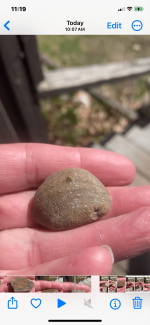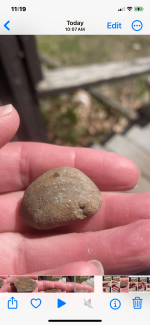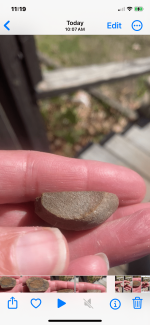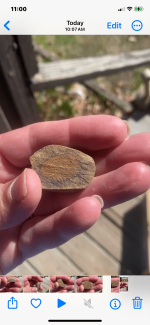Maybmeteor
Greenie
- May 20, 2023
- 10
- 12
I found this a while back in my garden and am just curious if there are any ideas?? It looks almost as though it is part of a small stone bowl or something
 Thank you in advance
Thank you in advanceAttachments
Last edited:










